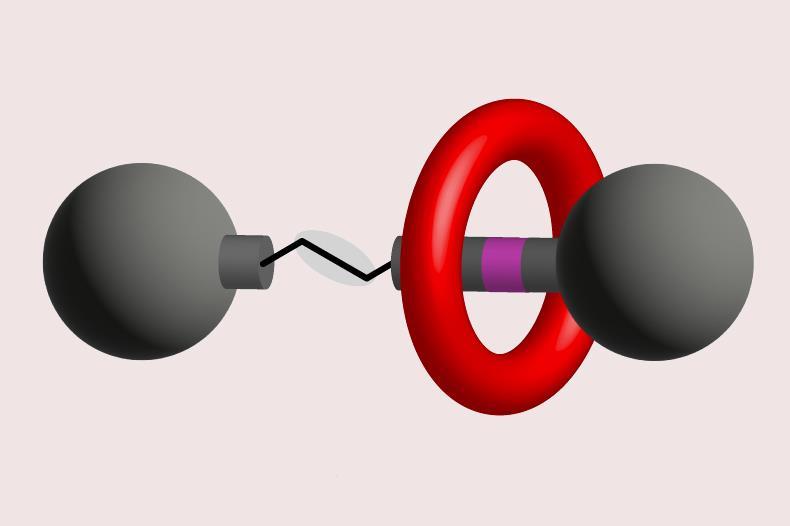
Skeletal editing technique removes nitrogen atoms from rotaxanes
A new technique selectively removes nitrogen atoms from rotaxanes and forms a stabilising carbon–carbon bond, without allowing the existing structure to unravel. The reaction extends the use of skeletal editing to a complex supramolecular structure and could offer a way to modify many other similar molecules that are difficult to access with conventional synthetic techniques.
Rotaxanes are interlocked molecular structures consisting of a ring-shaped macrocycle threaded onto a linear axle, which is capped by bulky stoppers to prevent the ring from slipping off. The design enables them to function as molecular machines like switches and carriers of molecular cargo.
Now, a team led by David Leigh at the University of Manchester, UK, has used a skeletal editing technique to remove an amine site from a rotaxane’s axle that had helped to hold the ring in position during the rotaxane’s construction. Removing this template site is difficult because non-covalent interactions can keep the macrocyclic ring situated around that part of the axle. This means that breaking the axle to remove the nitrogen could cause the ring to slip off, destroying the rotaxane’s structure.
Deprotonation of the amine site with a base causes the macrocyclic ring to shift further down the rotaxane’s axle, allowing unimpeded access to the anomeric amide reagent. After loss of molecular nitrogen, the diradical pair recombine to form a new carbon–carbon bond, repairing the rotaxane’s broken axle

















